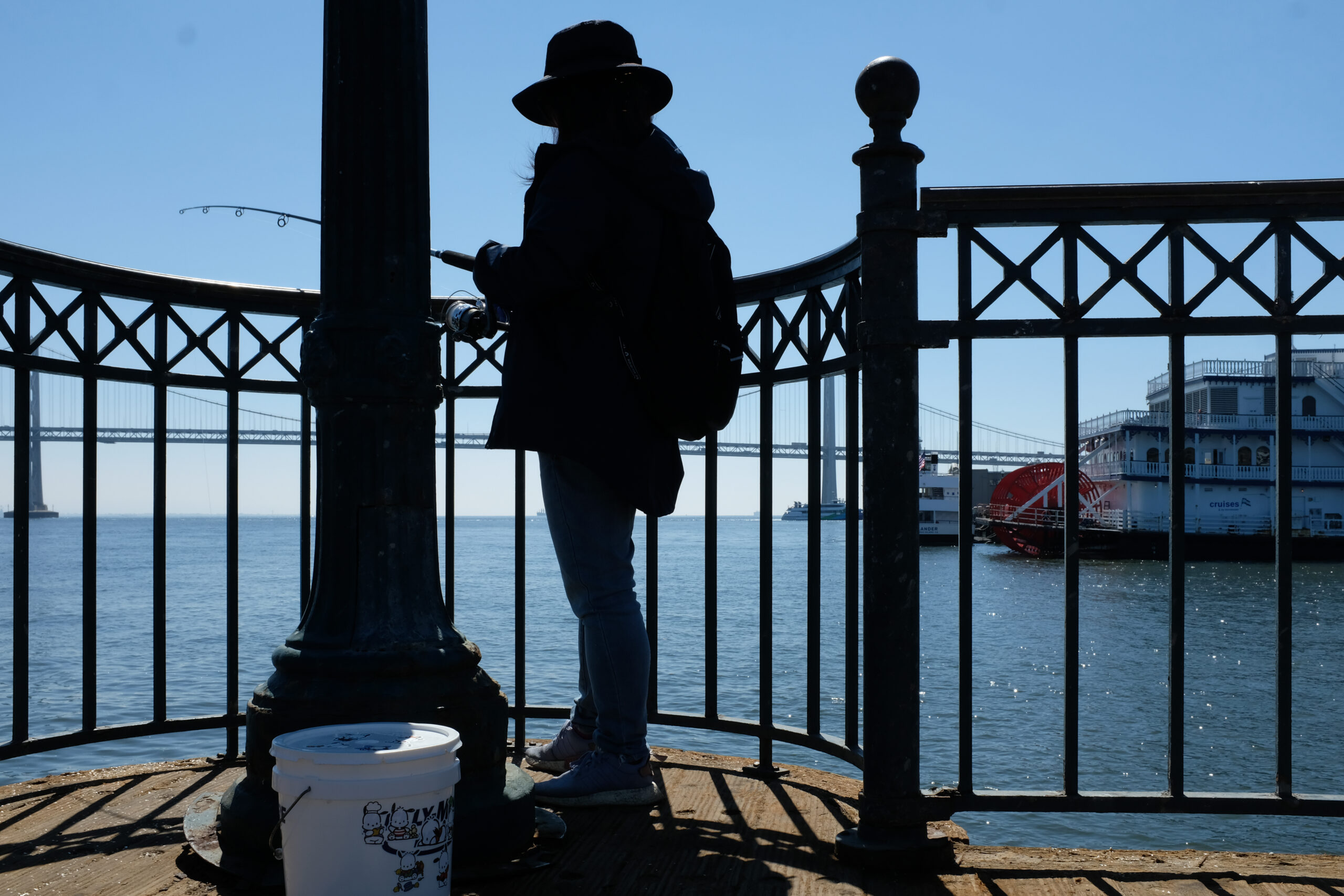A harmful algal bloom has been slaughtering fish across the San Francisco Bay for weeks, but as anglers continue to catch fish—is it safe to do so?
Shocking images of hundreds of dead fish and stingrays washing up at Lake Merritt and across Bay Area shores have surfaced across news outlets and social media recently, sparking worries that the bloom is dangerous.
But the algal bloom isn’t known to be toxic to humans, and so far the advice says you should keep pets away from the water and not to eat the algae or any dead fish onshore.
Eating live-caught fish shouldn’t pose a risk to humans, according to the California Environmental Protection Agency’s Office of Environmental Health Hazard Assessment. But other scientists say it’s better to be safe than sorry.
“I wouldn’t eat fish caught during this bloom,” said William Cochlan, senior research scientist at San Francisco State University’s Estuary and Ocean Science Center, one of few places that has grown this species of algae in their lab.
“This is primarily out of an abundance of caution,” continued Cochlan. “We don’t know any humans who have gotten sick from this specific type of bloom, but to be safe I would avoid eating any caught fish from the bay until it’s gone.”
That’s because the species causing this bloom, Heterosigma akashiwo, is an understudied type of algae, so scientists are still understanding its effects on local marine wildlife, said Mark Westlund, communications director for nonprofit San Francisco Baykeeper. It is clear that the bloom is killing finned fish by asphyxiation, Cohlan said, but the toxins may not be accumulating in the bodies of live fish and shellfish.
There have been no firm advisories so far about this bloom on California’s public health or fish and wildlife websites, which issue warnings about biotoxins in fish, shellfish and crustaceans.
And in San Francisco, fish are still being reeled in for food by the likes of Richmond resident Victoria Hon, who caught more than 15 small fish so far this week from a spot on Pier 7.
J&P Bait owner Erik Sandquist sells anchovies out of Fisherman’s Wharf and said the biggest effect of the algae has been to deplete the oxygen in the water, weakening the anchovies so they die sooner—but the last few days have been better. He said his business has not suffered as a result of the bloom.
And an employee at Vince’s Shellfish Co. in San Bruno said the business hasn’t paused any of its fishing either.
Even so, SF Baykeeper advises locals not to eat seafood from water affected by the algae and to avoid shellfish for now.
Cochlan agrees that avoiding eating oysters right now is a good idea, even though those types of bivalves aren’t known to become toxic from this type of algae.
Fortunately for crabbers, crab season this winter looks to be unaffected.
Toxic algae blooms of a different variety, Pseudo-nitzschia—not the current algae bloom variety—is known to delay or cancel crabbing season when a high concentration of the toxin domoic acid is found in crabs. In recent years, local crab season has been derailed by a number of factors, like whale entanglements and migrating sea turtles.
But according to Cochlan, the algae causing this year’s bloom is not known to produce domoic acid.
Correction: This story has been updated to reflect that the Office of Environmental Health Hazard Assessment is part of the California Environmental Protection Agency.
